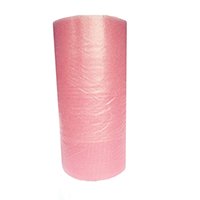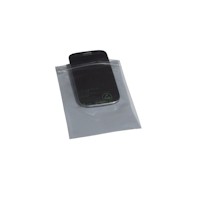Packaging for Electronics – Part One
Friday's Industry Tips
Hi everyone,
Welcome back to our weekly post where we dive into the world of packaging solutions. Today, we're focusing on the electronics industry — a sector that demands more than just standard packaging. While food and clothing have their own unique needs, electronics require specialized protection due to environmental factors like static, moisture, and physical damage.
The electronics industry is incredibly diverse, ranging from tiny circuit boards to large consumer devices like laptops and TVs. Over the years, Kite has worked with many electronics retailers and manufacturers, and it’s clear that this industry requires a high level of care when it comes to packaging. Unlike fashion or food, electronic products are not designed for aesthetics but for durability and safety.
In today's post, we'll explore the key challenges faced by the electronics industry and the best packaging solutions to keep your products safe during transit. If you're in the business, we'd love to hear your thoughts — feel free to reach out on Twitter @kitepackaging.
Key Packaging Needs for the Electronics Industry
Unlike other industries, the electronics sector often has a more focused range of packaging needs. However, the variety of products — from small components to large appliances — means that flexibility is essential. For larger companies, custom packaging solutions are often necessary to manage multi-site operations and ensure product integrity at every stage.
For smaller businesses, especially those dealing with computer parts or electrical components, there are dedicated packaging options available that help protect items from the moment they leave the factory until they arrive at the customer’s doorstep. But what are the main threats?
- High Value: Electronic products are typically expensive, so the cost of replacement can be much higher than the cost of protective packaging. That’s why quality is non-negotiable.
- Static: Small electronics are highly sensitive to static electricity, which can cause permanent damage. Anti-static materials are a must.
- Moisture: Even a little humidity can lead to rust or corrosion, making moisture control critical.
- Surface Damage: Products with polished surfaces, like laptops or TVs, are prone to scratches during transport. Any blemish can result in returns.
Packaging Solutions for Electronics
In this first part of our two-part series, we’ll focus on how to protect electronics from static and moisture — two of the biggest threats. We’re always looking for feedback, so if you think we’ve missed something, let us know!
Join us next week as we take a closer look at labeling and point-of-sale packaging for electronics.
Anti-Static Wrapping

Anti-static bubble wrap is perfect for both small and large electronic components. It prevents static buildup while offering the same cushioning as regular bubble wrap. Our version includes a special nylon layer that improves air retention, ensuring better protection during long-distance shipping.
We also offer re-sealable anti-static bags, some with a bubble-lined interior. These are great for sending small parts, like those used in building circuits or computers. The re-sealable option makes it easy to label and reuse the bags, ideal for managing multiple shipments.
All anti-static products are pink, helping you easily distinguish them from regular packaging.
Shielding Bags

Metallized shielding bags provide extra protection against external static charges, especially from other electronic devices. These bags feature a special coating that offers full Faraday cage protection and are marked with the ESD logo to indicate their anti-static and dissipative properties.
They are transparent, making it easy to identify contents without opening the bag. They can also be heat-sealed without losing their protective qualities, making them ideal for high-security shipments.
Corstat Boxes
Corstat boxes are an excellent choice for a wide range of electronic items. Like shielding bags, they offer Faraday cage protection and carry the ESD logo. For highly sensitive products, these boxes come with foam inserts that absorb shocks and prevent damage during transit. The foam is also treated with anti-static material to ensure complete protection.
Next Week
Stay tuned for part two, where we’ll cover packaging for delicate materials and presentation packaging for electronics. Until then, have a great weekend!
Mianyang Shengshi Health Technology Co.,Ltd , https://www.shengshiaminoacid.com